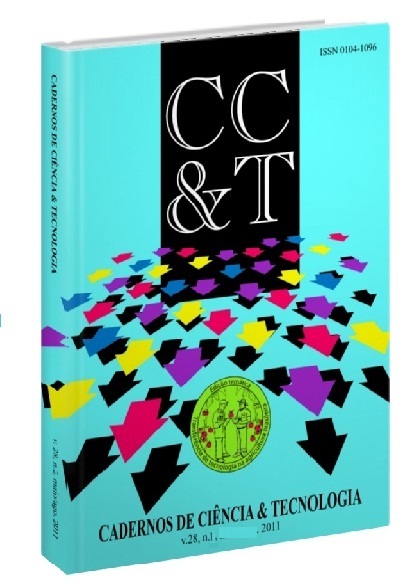ANIMAL HEALTH DIAGNOSIS CENTER (CEDISA): TECHNOLOGY-BASED INSTITUTION INCUBATED AT EMBRAPA SWINE &POULTRY
DOI:
https://doi.org/10.35977/0104-1096.cct2011.v28.12037Keywords:
monitoring, Oscip, technical services, technology transferAbstract
This article presents an institutional arrangement for the development and operation of a diagnostic center, being subsidiary to the official monitoring system, to perform laboratory services on animal health. This strategy helps combat the harmful effects of the incidence of infectious diseases that may affect the production and the export of meat from Brazil. This article was divided in four sections, the first one describing the swine and poultry productive chains; the second one discussing some aspects of health protection and the strategic role of the health of livestock in these chains; the third one describing the institutional arrangement established in the specific case; and the fourth section addressing the perspectives arising from this type of arrangement and laboratory control. The circumstances that prompted the imposition of such initiative are explained, and it is concluded that such institutional arrangement, whose setup was described in this article, can be successfully replicated in Embrapa research centers. As a process for incubating institutions to provide official technology-based services, it may be suitable for animal health, plant health, environmental impact assessment and molecular analysis, waste analysis services and product quality services. It is suggested that this arrangement may also be configured to form a national or regional network of laboratories working with various products or issues.Downloads
Published
2011-01-01
How to Cite
Silveira, P. R. S. da, Monticelli, C. J., Figueiredo, E. A. P. de, & Ventura, L. (2011). ANIMAL HEALTH DIAGNOSIS CENTER (CEDISA): TECHNOLOGY-BASED INSTITUTION INCUBATED AT EMBRAPA SWINE &POULTRY. Science & Technology Journals, 28(1), 115–131. https://doi.org/10.35977/0104-1096.cct2011.v28.12037
Issue
Section
Ensaios


